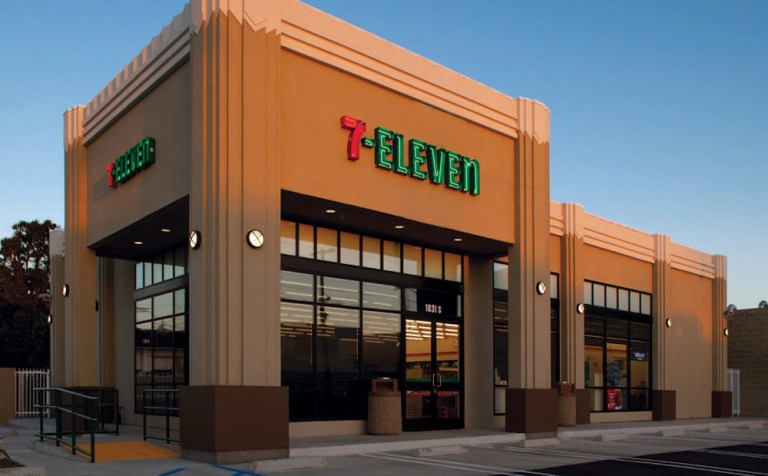The High-Touch Digital Future Convenience Commerce According To 7-Eleven

Amazon’s entry into a new market is rarely considered good news in the world of retail.
Blue Apron was already having difficulty keeping investors calm. But when the eCommerce giant announced a rendezvous into the meal kit space in August of 2017, the recently public meal kit delivery startup began a (now many months-long battle) to get its stock price back above $3. When Amazon’s acquisition of Whole Foods was announced last year, grocery stocks across the board were roundly pummeled.
But 7-Eleven — arguably the latest big brand facing the “Amazon Effect” — is not quite suffering from the normal terror of confrontation that accompanies a direct clash with Amazon.
From where the world’s largest convenience store brand sits, Amazon’s offering isn’t exactly a direct competitor with the small stores 7-Eleven operates around the world — and isn’t likely to become one. While both companies are angling for customer convenience, each offers a very different vision of what that words means for the customers they’re trying to reach.
Moreover, Joseph DePinto, CEO of 7-Eleven, Inc., said there’s a difference in how each brand is trying to reach its audience. Customers, he said, are becoming more digital in nature, “completely redefining what ‘convenience’ is.” Baked into that expanded definition and demand for an ever-increasing amount of digital services is the core 7-Eleven customer who’s looking for a higher touch, more service-intensive visit.
The redefined retail experience of the future — the more convenient convenience store — will find ways to bring both of those needs together by doing what small stores like 7-Eleven has historically shined at — keeping customers moving forward while quickly filling many commerce needs.
The New Frontier of Digital
There are lot of 7-Eleven locations — nearly 70,000 worldwide and over 10,000 in the United States alone. By some estimates, about a quarter of the U.S. population lives within one mile of a 7-Eleven. They’re nearly universally recognizable as the brand behind the twin cultural forces of the Slurpee and the Big Gulp.
In a way, the typical 7-Eleven customer is everyone, by nature of their ubiquity. To keep up with the competition, the brand has been expanding and enhancing its digital offerings to match the reality that the bulk of American consumers are demanding smoother digital transactions.
“”When you fast-forward, you’re now looking to redefine convenience by building the experiences of the future, powered by digital,”said Gurmeet Singh, 7-Eleven’s CIO and CDO, who was hired last year to recreate the brand’s digital experience.
Which has translated into a variety of upgrades going forward. The brand expanded its 7Rewards mobile app-based customer loyalty program and launched a 7-Eleven bot on Facebook Messenger for better customer service and brand engagement.
But the bigger changes, Singh said, are still to come. In various Texas locations, for example, the company is testing short-range delivery of food and convenience items with its 7Now program, which is slated to expand throughout the nation later this year. He joked the expansion would make 7-Eleven the first brand in history to offer consumers a pizza and a bottle of Pepto Bismol at the same time.
A ringing endorsement of 7-Eleven’s delivery service — a less ringing endorsement of their pizza.
But it’s a solid example of the firm’s efforts at digitization. “The biggest aspect is having deep empathy with our customers and doing a lot of observation of customer journeys to understand the friction points so that one can respond before being asked,” he said.
The Cash Customer
While nothing can truly render a brand Amazon-proof, what insulates 7-Eleven from the “Amazon Effect” to an extant is the fact that a large segment of the company’s customer base would actually be quite poorly served by the Amazon Go model, which favors digital processing of payments, checkout data on the backend and limited interaction with human employees.
Cash-based 7-Eleven customers use the store’s brick-and-mortar hub to pay bills, pay taxes and load Amazon Cash cards so they can shop digitally even without a major credit card. Their convenience stores also accept EBT (traditionally known as good stamps); currently, Amazon Go locations do not (though the firm is working to change that).
Overall, 7-Eleven offers a physical hub where many Americans, who might otherwise be tied to cash, can digitize their daily interactions. Amazon Go is not pitched to that kind of holistic service model; 7-Eleven is built on it.